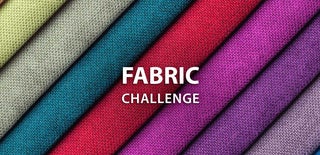Introduction: How to Use Fabric to Make Plastic Flower Pots Beautiful
I love finding old chandeliers at the dump reuse centre. There is so much you can do with them and each one is unique. While not a traditional chandelier (it is for candles), this one was just begging for a makeover so I grabbed some plastic flower pots and beautiful fabric.
Supplies
Old Chandelier
Fabric
Scissors
Mod Podge
Plastic flower pots
Paint
Faux or real flowers
Step 1: The Dump Find Chandelier
Step 2: The Flower Pots
I found some plastic, lightweight ones at the dollar store, and they were a perfect size. They were also thin enough that it was easy to punch a hole in the bottom so that they would sit on the candle spikes.
Step 3: The Fabric
Instead of painting them, I decided to cover them in some beautiful scrap fabric I had. I just used some other scrap fabric a few weeks ago for this project too – fabric must be speaking to me lately 🙂
Step 4: Making a Pattern
Covering flower pots can be a bit tricky because of their shape but there is a quick way to get the size you need. Lay your flower pot onto the back of the fabric and then lay a pen against the top of the pot. Start to roll your pot moving your pen along with it. As the pot rolls, it will move in a curve and the pen will mark out that curve for you. When you get to the end, put the flower pot back at the beginning and do the same for the bottom.
Step 5: Cutting the Fabric
When you are done, you will be left with the perfect curve. To cut out the piece you marked, add about an inch to the top and bottom so that you have enough to tuck over the edges.
Step 6: Cutting Additional Pieces
Once I had the first piece cut, I used it as a template to cut three more.
Step 7: Adhering the Fabric
To adhere the fabric to the flower pot, I used Matte Mod Podge. I brushed on a generous coat all over and then laid the fabric over top. As I worked my way around the pot I smoothed the fabric out with my fingers.
When I got back to where I started, I overlapped the fabric slightly and added some more Mod Podge to hold the layers together.
Step 8: Finishing the Top
To give the top and bottom a nice finished look, I brushed on a layer of Mod Podge to the inside of the flower pot and then folded the fabric over.
Step 9: Coating the Fabric
Before doing the same to the bottom, I gave the entire pot a coat of Mod Podge on top of the fabric. This made sure everything stayed in place.
Step 10: Finishing the Bottom
Then, I finished off the bottom edge the same way as the top.
Step 11: Filling the Pots
Once the fabric was completely dry, I popped the pots onto the chandelier and began to fill them. I decided to fill my flower pots with faux greenery this time. I know this will be hung in a place that gets very little light so I figured this would be much prettier in the long run.
Faux greenery can be so expensive though. I had some I wasn’t using (that I had found at the dump reuse center for free) but it was a little too ugly for my taste. I grabbed some Fusion Mineral Paint in Bellwood and gave it a quick transformation and I absolutely love how it turned out. See the greenery transformation here…
Step 12: Painting the Chandelier
The chandelier was also given two coats of white paint to make it look softer and more cohesive.
Step 13: The Transformed Piece
I know I say this a lot, but it truly is amazing what a little fabric and paint can do to completely transform something. This dark and ugly piece feels light and airy and completely different now.
To see more repurposing projects, visit Recreated Designs here...

Participated in the
Fabric Challenge













